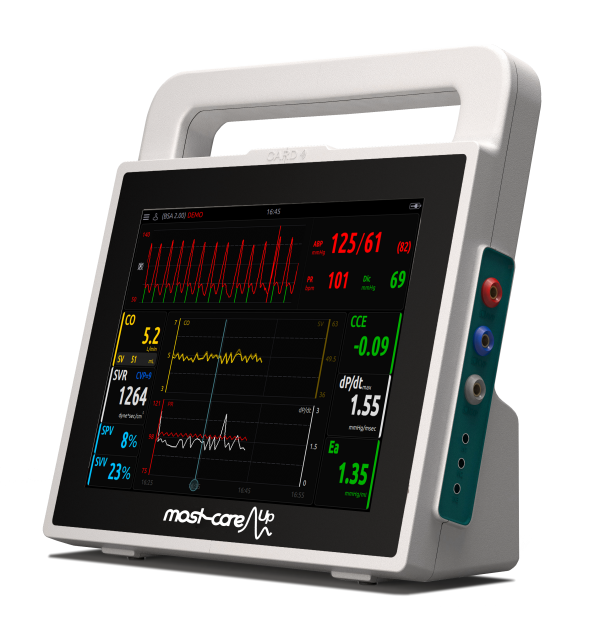
What is Cardiac Cycle Efficiency and what is its clinical value?
How to monitor fluids in critically ill patients?
What is Cardiac Cycle Efficiency and what is its clinical value?
Supported by an unrestricted educational grant from Vygon
Cardiac Cycle Efficiency (CCE) is a unique hemodynamic variable exclusive to MostCare Up. CCE provides a global assessment of total cardiovascular performance, measured in terms of energy expenditure. This is presented as the ratio between the energy created by the heart and the energy required to overcome cardiovascular resistance to the forward flow of oxygenated blood.
The value of CCE can range from +1; represented as a perfect score without energy expenditure, to negative values, where increased energy expenditure is required to generate a given SV.
When CCE is calculated the P.R.A.M. algorithm used in MostCare Up takes into account all the components influencing cardiac cycle: Left ventricular function, Heart rate, Preload and Afterload, including Arterial elastance and reflected pressure waves. So whilst CCE is a non-specific parameter in itself, it is extremely sensitive to changes in hemodynamic status.
In summary CCE acts as an early warning system of impending hemodynamic instability, allowing time to identify and correct the cause and is effective even when compensation mechanisms are in place and the patient remains asymptomatic.
For more information please refer to: Romano SM, Cardiac cycle efficiency: A new parameter able to fully evaluate the dynamic interplay of the cardiovascular system, Int J Cardiol (2011), doi:10.1016/j.ijcard.2011.12.008
Content responsability of Vygon